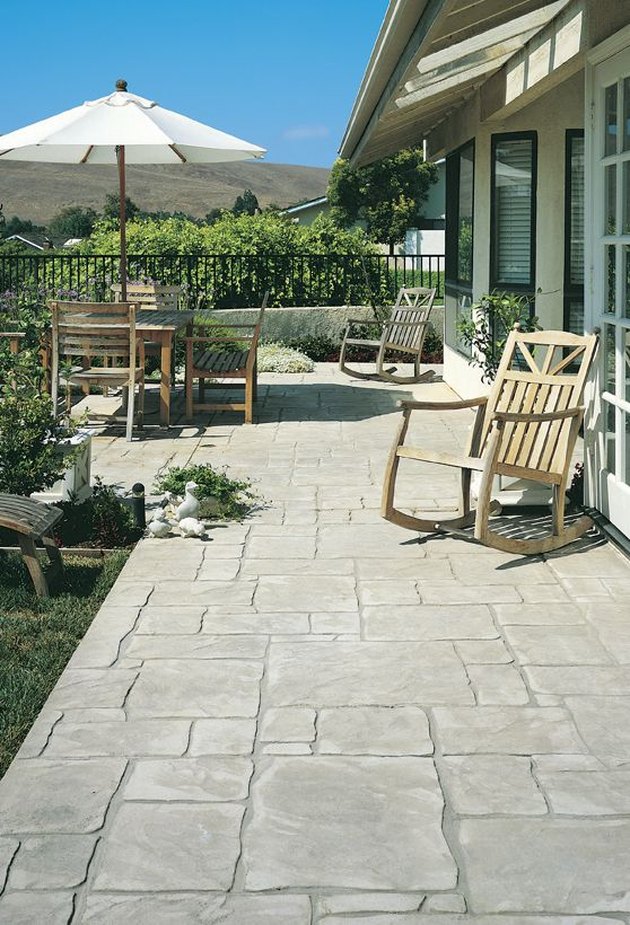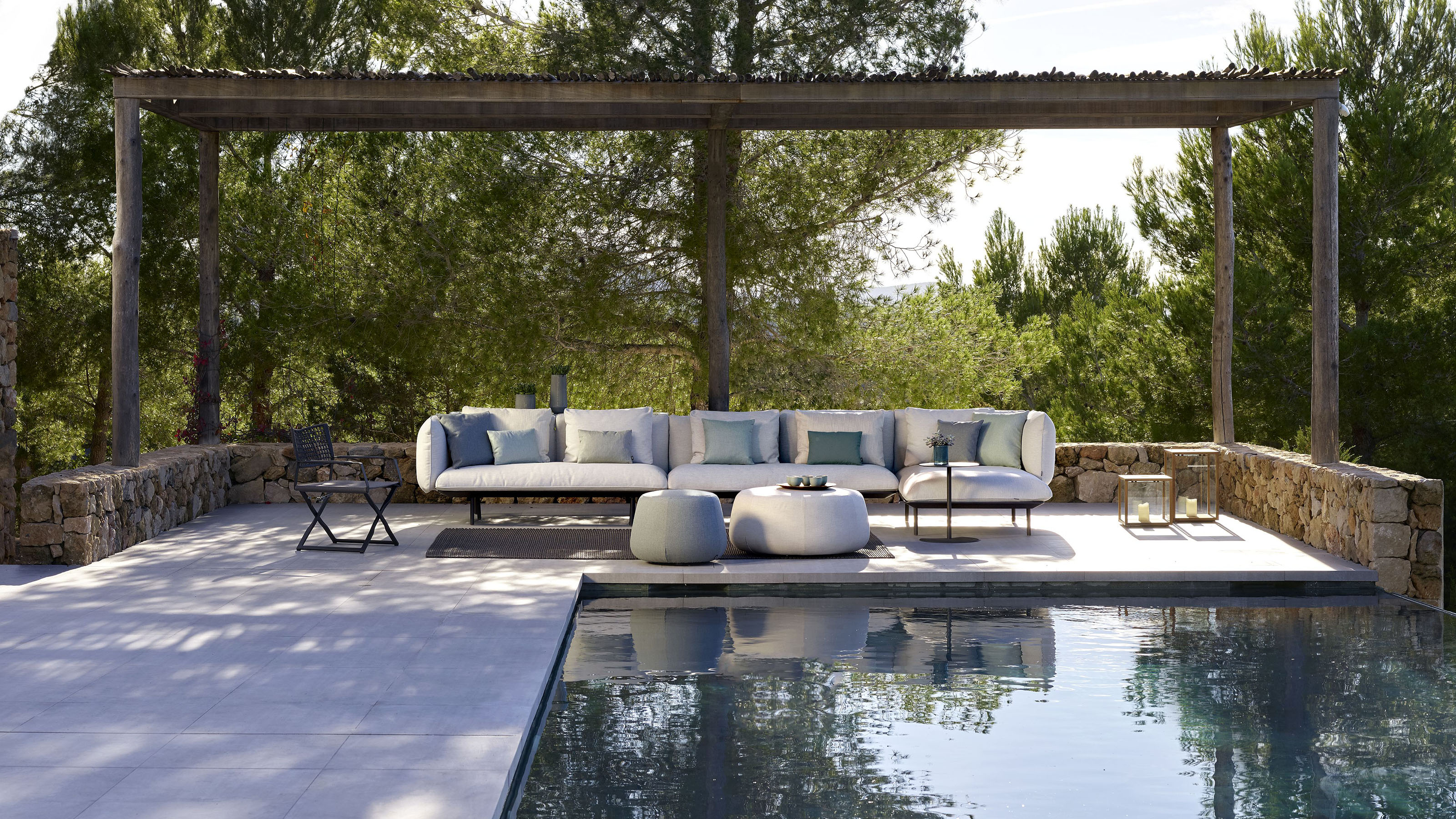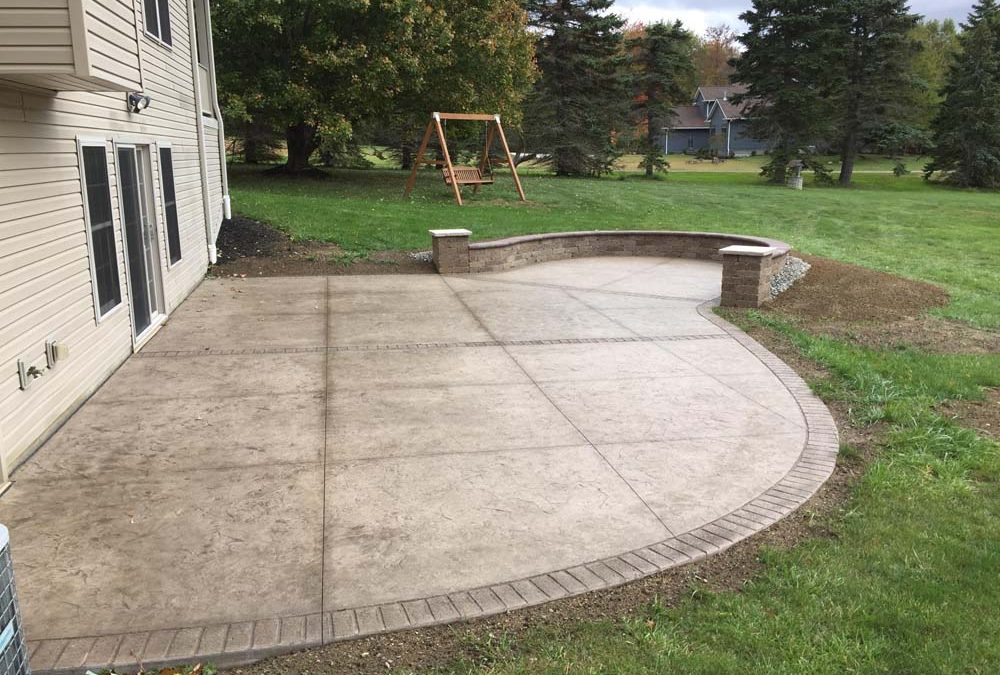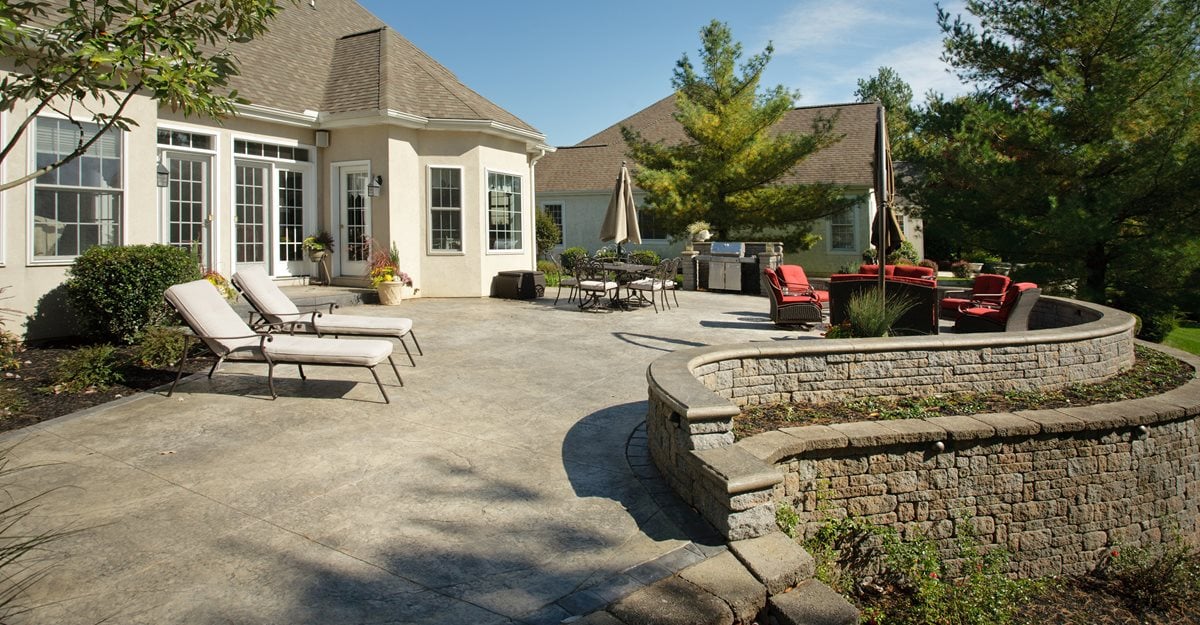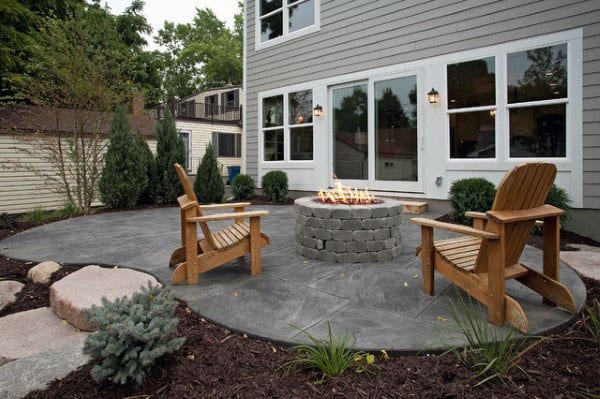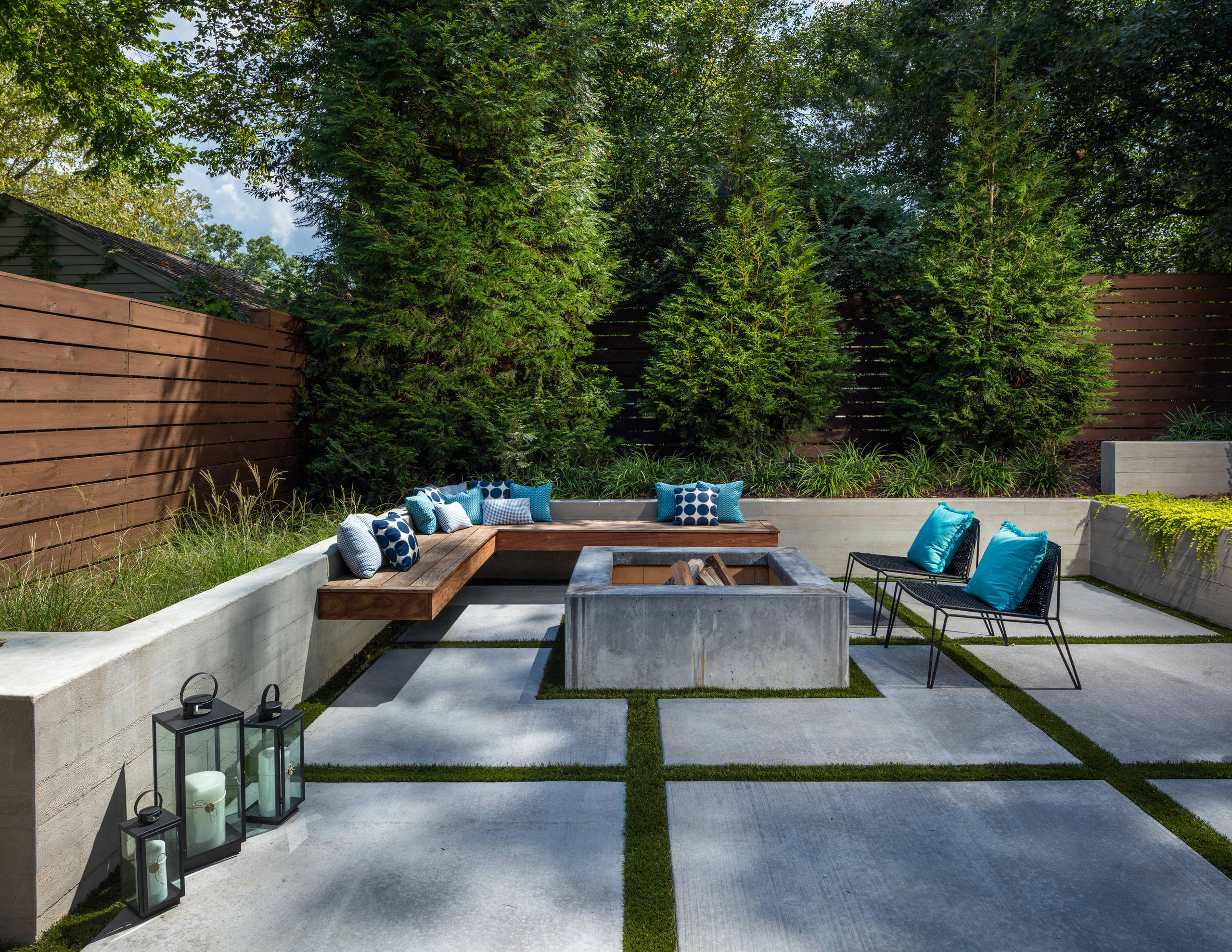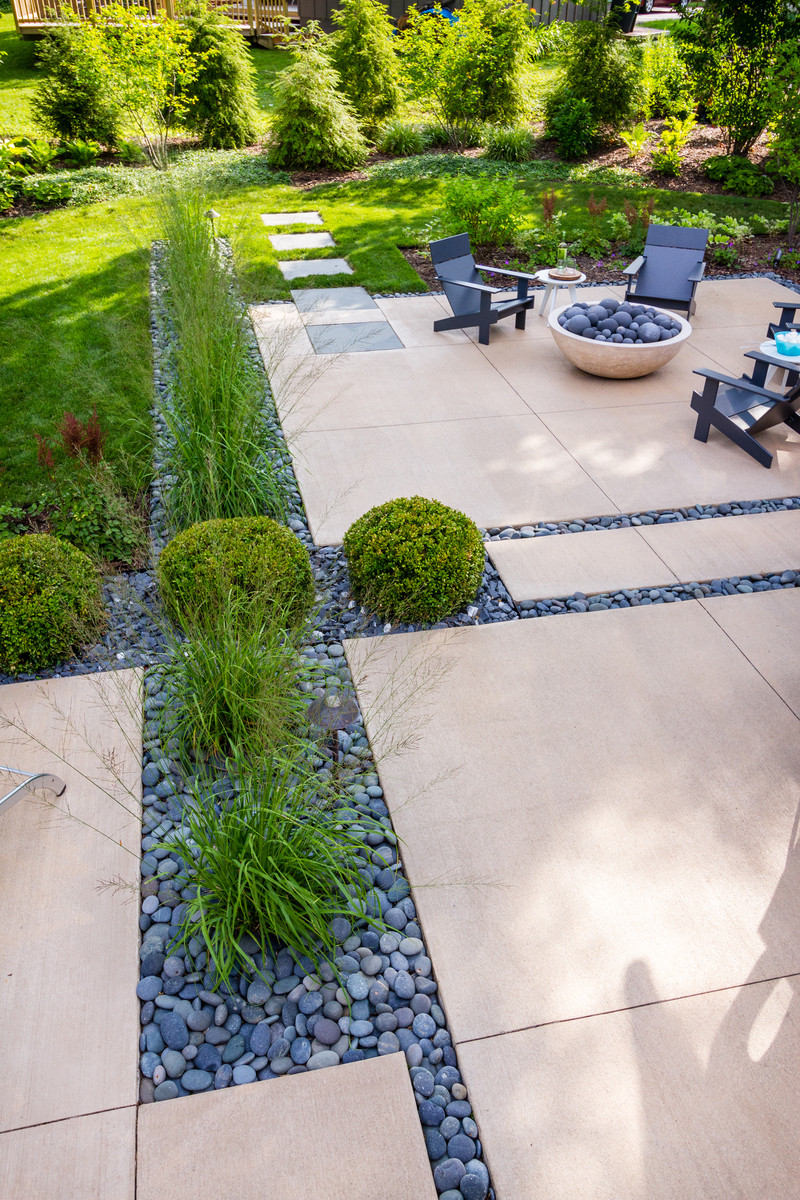Choosing the Right Concrete Finish for Your Patio
When I decided to create a concrete patio, one of the first decisions I had to make was choosing the right finish. It’s incredible how much of an impact the finish can have on the overall look and feel of the patio. After exploring different options, I found that selecting the right finish comes down to your style and how you plan to use the space. Here’s what I considered:
- Smooth Finish for a Modern Look: I love the sleek, modern look, so a smooth finish was a top contender for me. This finish creates a clean, polished surface that’s perfect for a contemporary patio. It’s easy to clean and works well with minimalist furniture and décor. Plus, the smooth surface feels great underfoot, making it a pleasure to walk barefoot.
- Broom Finish for Added Traction: Safety was also a priority, especially since my patio would be exposed to rain. That’s why I considered a broom finish. This finish is created by dragging a broom across the wet concrete, which adds texture and traction. It’s perfect for areas that might get wet or for families with kids who love to run around. It offers a bit of grip without compromising on style.
- Exposed Aggregate for a Unique Texture: If you’re looking for something that stands out, an exposed aggregate finish might be the way to go. I was drawn to this option because it reveals the natural stones and pebbles within the concrete, creating a textured, rustic look. It adds visual interest and feels more organic, blending seamlessly with a natural landscape.
- Stamped Finish for a Decorative Touch: For those who want a more decorative patio, a stamped finish is a fantastic choice. I considered this when I wanted to mimic the look of brick, stone, or even wood. Stamping gives you the flexibility to create intricate designs, all while enjoying the durability of concrete. It’s a great way to add character to your outdoor space.
- Trowel Finish for a Custom Look: A trowel finish offers a more customized appearance. By using different troweling techniques, you can create various patterns and textures. I liked the idea of a swirl pattern, which adds a subtle artistic flair to the patio. It’s a finish that allows for creativity and a truly unique look.
- Polished Finish for a Luxurious Feel: Finally, if luxury is what you’re after, a polished finish is hard to beat. I considered this option for its high-gloss, reflective surface that can make your patio feel more upscale. It’s smooth, sleek, and incredibly durable. The polished look is especially stunning at night when the patio lights reflect off the surface.

Creative Stamping Techniques for Concrete Patios
When I was designing my concrete patio, I knew I wanted something that stood out. That’s when I discovered the world of stamping techniques. Stamping allows you to transform a plain concrete slab into something that looks like brick, stone, or even wood. It’s an affordable way to add a decorative touch without sacrificing durability. Here’s how I explored different stamping techniques:
Brick Patterns for a Classic Look: I’ve always loved the timeless appeal of brick, so creating a brick pattern was high on my list. With stamping, I was able to replicate the look of traditional brickwork without the hassle of laying individual bricks. The result was a classic, rustic patio that feels both cozy and inviting.
Stone-Look Stamping for a Natural Aesthetic: Another technique that caught my eye was stone-look stamping. This method can mimic the appearance of various stones like slate, flagstone, or cobblestone. I opted for a slate pattern because it gives the patio a natural, earthy feel. It’s perfect if you want to blend your patio with the surrounding landscape.
Wood Plank Stamping for a Rustic Vibe: I was amazed to learn that concrete could be stamped to look like wood planks. This technique is ideal if you love the look of wood but want the durability of concrete. I considered this for a section of my patio to create a warm, rustic vibe that contrasts beautifully with the surrounding greenery.
Custom Designs for Personalization: Stamping isn’t just limited to mimicking other materials. You can also create custom designs that reflect your style. I toyed with the idea of adding a compass rose or geometric patterns. These custom touches can make your patio truly one-of-a-kind and a reflection of your personality.
Border Stamping for Definition: To add some definition to my patio, I explored the idea of border stamping. This involves using a different pattern or color around the edges of the patio. It’s a subtle way to create contrast and draw attention to the overall design. I found it especially useful in defining spaces within a larger patio area.
Combining Stamps for a Unique Look: One of the most exciting aspects of stamping is the ability to combine different patterns. I considered mixing stone and brick stamps to create a patio with distinct areas that still felt cohesive. Combining stamps allows for endless creativity and can result in a truly unique outdoor space.
Incorporating Color into Your Concrete Patio Design
When I first thought about concrete, I imagined a dull, gray surface. But then I discovered the magic of adding color to concrete, and it completely changed my perspective. Incorporating color into your patio design can make it vibrant and lively, turning a simple slab into a focal point of your outdoor space. Here’s how I approached adding color to my concrete patio:
Integral Coloring for a Consistent Hue
Integral coloring was one of the first methods I explored. This involves mixing the color directly into the concrete before it’s poured, ensuring the color is consistent throughout the slab. I loved this option because it provides a uniform color that won’t fade or chip away over time. It’s a subtle way to add warmth or coolness to your patio without being too bold.
Acid Staining for a Marbled Effect
If you want a more dynamic look, acid staining is a fantastic option. I was drawn to this technique because it reacts with the minerals in the concrete, creating unique marbled effects and a rich, variegated color. It’s perfect if you’re looking for something that feels more organic and one-of-a-kind.
Water-Based Stains for a Range of Colors
For those who want more control over the color palette, water-based stains are worth considering. I found that they offer a broader range of colors, from soft pastels to vibrant hues. The application process is straightforward, and you can layer colors to create depth and dimension.
Concrete Dyes for Bold Statements
Concrete dyes are another way to introduce color. Unlike stains, dyes penetrate the concrete quickly and can produce bold, vibrant colors. I considered this option for creating accent areas on the patio, like a bright border or a striking design in the center. Dyes are great for adding a pop of color where you want it most.
Color Hardener for Added Durability
If durability is a concern, using a color hardener might be the best route. This method involves broadcasting a powder onto the wet concrete, which is then worked into the surface. I liked this option because it not only adds color but also makes the surface harder and more resistant to wear and tear. It’s ideal for high-traffic areas.
Combining Colors for a Custom Look
Finally, I played with the idea of combining different colors to create a custom look. By using various stains, dyes, or integrally colored concrete, I could create patterns, gradients, or even a mosaic effect. This approach allows for a high level of creativity and personalization.
Using Patterns and Textures to Elevate Your Concrete Patio
One of the things I love most about concrete patios is the ability to play with patterns and textures. It’s amazing how a few simple design choices can completely transform the look and feel of the space. If you’re looking to elevate your concrete patio beyond the ordinary, experimenting with patterns and textures is a must. Here’s how I approached it:
Herringbone Patterns for a Timeless Appeal
The herringbone pattern was one of the first designs I considered. It’s a classic pattern that adds a sense of order and sophistication to any space. I loved how it made the patio look more structured and elegant, and it pairs beautifully with both modern and traditional outdoor furniture.
Basket Weave for a Touch of Charm
If you’re after something with a bit more charm, a basket weave pattern is a great option. I found that it adds a cozy, almost rustic feel to the patio. It’s perfect for creating a warm, inviting space where you can relax with friends and family.
Geometric Patterns for a Modern Twist
For a more contemporary look, I explored geometric patterns. Whether it’s hexagons, diamonds, or even triangles, these patterns can add a striking, modern twist to your patio. I liked the idea of using bold, geometric designs to make the patio a true statement piece.
Textured Finishes for Depth
Patterns aren’t the only way to add interest-textures play a crucial role too. I considered different textured finishes, like sandblasting or brushing, to give the concrete surface more depth. Textured finishes can make the patio feel more tactile and engaging, inviting people to touch and explore.
Mixing Patterns and Textures for a Unique Look
One of the most exciting aspects of designing a concrete patio is the ability to mix patterns and textures. I toyed with the idea of combining a smooth surface with a patterned border or integrating different textures within the same area. This approach allows for endless creativity and can result in a truly unique patio.
Adding Inlays for Extra Flair
Finally, I considered adding inlays to the patio for a bit of extra flair. Whether it’s using tiles, stones, or even metal, inlays can break up the concrete and add a decorative touch. I found that inlays are a great way to personalize the space and make it feel more custom.
Integrating Concrete with Other Patio Materials
As much as I love concrete, I knew I wanted to incorporate other materials into my patio design to add more variety and interest. Mixing materials not only enhances the aesthetic appeal but also allows for a more functional and versatile space. Here’s how I approached integrating concrete with other patio materials:
Combining Concrete with Wood for Warmth
One of the first ideas I had was to combine concrete with wood. I love the warmth and natural feel that wood brings to a space. I considered using wooden decking alongside the concrete patio, creating a contrast between the sleekness of concrete and the organic texture of wood. It’s a combination that feels both modern and inviting.
Adding Stone Accents for a Natural Look
Stone is another material that pairs beautifully with concrete. I explored the idea of using stone pavers or a stone wall to complement the concrete. The rough, natural texture of stone adds a rugged elegance, making the patio feel more grounded and connected to the surrounding landscape.
Integrating Metal Elements for a Modern Edge
For a more industrial look, I considered integrating metal elements into the patio design. Whether it’s using metal planters, edging, or even a fire pit, metal adds a sleek, modern edge to the space. I found that combining concrete with metal creates a contemporary vibe that’s both stylish and durable.
Using Tile for a Pop of Color
To add some color and pattern, I looked into incorporating tiles into the patio. Whether it’s a tiled border or an inlay, tiles can bring a pop of color and a bit of Mediterranean flair to the patio. I loved how this idea could add visual interest without overwhelming the overall design.
Blending Concrete with Gravel for a Textured Contrast
Another combination I considered was concrete and gravel. Gravel is an affordable and low-maintenance option that adds texture and a bit of crunch underfoot. I liked the idea of using gravel in areas where I wanted a more casual, laid-back feel. It’s a great way to break up large concrete areas and create distinct zones.
Creating Green Spaces with Concrete Planters
Finally, I explored the idea of integrating greenery into the patio with concrete planters. Using large, built-in concrete planters allowed me to add plants and flowers directly into the patio design. It’s a seamless way to bring nature into the space while maintaining a cohesive look.
Concrete Patio Layouts: Maximizing Space and Flow
Designing the layout of my concrete patio was one of the most exciting parts of the process. I wanted to make sure that the space was not only beautiful but also functional. The layout plays a crucial role in how the patio feels and how well it serves your needs. Here’s how I approached maximizing space and flow in my patio design:
Zoning for Different Activities
The first thing I considered was zoning. I wanted my patio to serve multiple purposes, from dining and lounging to cooking and entertaining. By creating distinct zones for each activity, I was able to make the most of the space. I used furniture and planters to define each area, ensuring that there was a natural flow between zones.
Creating a Central Focal Point
To anchor the design, I decided to create a central focal point. This could be anything from a fire pit to a dining table or a water feature. I chose a fire pit because it not only serves as a visual centerpiece but also as a gathering spot. The focal point helps to draw the eye and make the space feel cohesive.
Maximizing Space with Built-In Seating
Space was a bit limited, so I looked into ways to maximize it. One of the best solutions I found was to incorporate built-in seating. Concrete benches or seating walls take up less space than freestanding furniture and can double as retaining walls or planters. It’s a practical way to add more seating without crowding the patio.
Ensuring Smooth Traffic Flow
Another key consideration was ensuring smooth traffic flow. I wanted to make sure that people could move easily from one area to another without feeling cramped. I laid out the furniture in a way that creates clear pathways and avoids bottlenecks. It’s important to think about how people will use the space and move through it.
Using Vertical Space for Storage and Greenery
To free up floor space, I explored using vertical space. Adding shelves, trellises, or even hanging planters allowed me to add storage and greenery without taking up valuable patio real estate. Vertical elements can also help to create privacy or add visual interest to the space.
Planning for Flexibility
Finally, I made sure to plan for flexibility. I wanted the patio to be adaptable for different occasions, whether it’s a quiet evening or a big gathering. I opted for modular furniture that can be rearranged as needed, and I left some open space that can be used for extra seating or activities. Flexibility ensures that the patio can evolve with my needs.
Concrete Patio Ideas to Choose from for your Compound
DIY Cool & Creative Patio Flooring Ideas
Concrete Patio Ideas – Unique Backyard Retreats
Concrete Patio Cost – How Much to Pour a Patio?
Concrete Patio Ideas You’ll Love
Concrete Patio Ideas
Related Posts:

